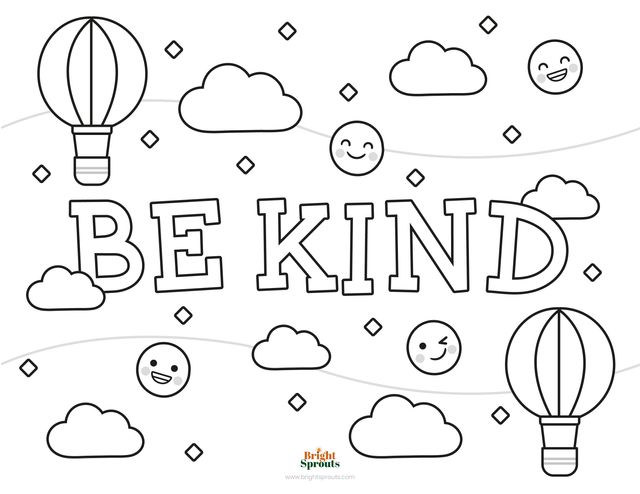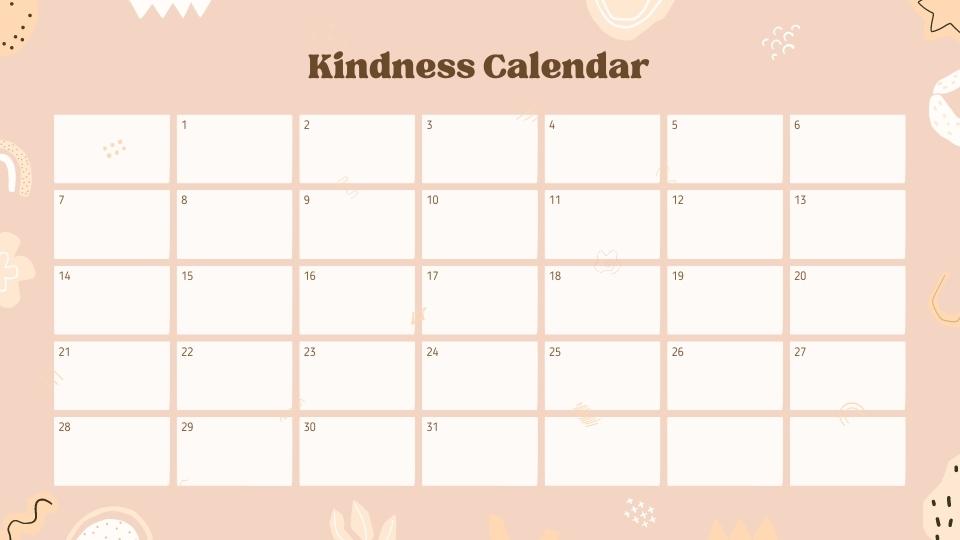
The world needs more kindness, and we can foster it in our kids through fun activities.

Kindness is one of the most important attributes we can help our kids learn. The best part is that it doesn’t take much teaching. Kids are hard-wired for kindness. They might just need a gentle reminder of what is already inside them.
Being kind and being nice are two different things. If we want our kids to learn empathy and kindness, we must help them understand what it is all about. The best way to teach kindness is to model it.

This activity is great for older kids who might need extra motivation in the kindness department. Adolescence is tricky to navigate. It is invaluable to give your teen the tools they need to examine their emotions and actions.
Fostering an attitude of kindness will stand your child in good stead as they grow.
A few writing prompts could be:
You can adapt this activity for younger kids so they can form the habit of keeping a journal. For example, smaller kids can draw acts of kindness rather than writing.
This kindness activity works well with preschoolers. Draw a smiley face on a ball or bean bag. Put on some upbeat music and get the kids to throw the smiley face at each other. Whoever is holding the smiley face when the music stops has to say something kind to members of the group.
The goal is to make them smile. Put a 15-second timer on, and the child scores a point for every smile they get. Games like this teach kids the power of saying something nice.
This is a great game to make kids aware of the facial expressions associated with emotions.
You sing it to the tune of “If you’re happy and you know it”, and you can insert different emotions. The kids will then have to make the corresponding facial expression.
This helps kids name, identify and respond to different feelings. It is a fun game to encourage empathy and teaches children how to show kindness.

A kindness tree is a great visual representation of your kids’ acts of kindness.
You can make it out of paper, stick it on the wall, or use a branch. Each time your kids perform a kind act, they can write it on a leaf and add it to the tree.
A fun idea is to have them write how those acts made them feel on flowers and fruit. They can add these to the tree as a reminder that kindness leads to positive emotions.
Teaching kindness through reading can go a long way, particularly with younger kids.
Here are some amazing books about kindness for kids:
You can use these books as inspiration for skits and role-play. These will help reinforce the message of kindness.
Donating food, toys, clothes, and diapers is an important kindness activity for kids. It teaches them about people outside their immediate sphere and gives them a sense of community.
Helping others is a great way for kids to see the real and direct effects of kindness. Seeing the joy it brings will encourage them to keep it up.

Growing a seed is an easy way for kids to get hands-on experience with kindness. Nurturing a seed takes care, thoughtfulness, patience, and love. These are all qualities that we want our kids to practice.
The kids can decorate their pots with a kind saying or action. You can encourage them to say one kind thing to their plants daily. Some kids might find it easier to say something kind to a plant before they start saying something kind to others.
Doing kind acts for others is important, but so is being kind to yourself. Positive affirmations are essential for kids, so why not add kindness affirmations to your morning routine? If kids can feel positive about themselves, they will find it easier to be kind to others.
Here are 5 kindness affirmations for your morning routine:
Kindness coupons are a practical way for kids to practice being kind daily. They can have a coupon booklet filled with thoughtful acts they can do for their friends.
Not only will it get kids involved with being kind, but it will also show them that kindness is contagious. The fact that it makes you feel good is a bonus.


Coloring pages with kindness affirmations are a fun way of teaching kindness. They are creative and fun, and you can pin them up afterward as a colorful reminder. Younger children can have coloring pages of kind acts which are relatable and practical.
A random act of kindness mailbox is a fun idea that gets the whole family involved.
Write a list of kind acts on pieces of paper and post them into the mailbox at the start of the week. Then each family member can pick as many acts as they want to perform throughout the week. This kindness activity teaches children that being kind to others is a family affair.
Here are some ideas:
You can have a kindness worm at home or in the classroom. Start the beginning of the year with just a head and add on body segments as your kids do kind acts.
A worm is a great way for your kids to see kindness in action as the worm gets longer. The fun part is there is no limit on the number of segments you can add. The worm will just get longer and longer.

This fun kindness activity works for the whole family and encourages kindness throughout the month.
Each family member can get their own bingo sheet filled with kindness ideas. They can cross off the acts as they complete them. The first person to complete the chart gets a prize.
You could also have a family chart rather than individual ones. That way, you can include more significant acts, and your kids can see you modeling kindness. It is a simple way to create a culture of kindness in your home.
Singing is good for your soul and makes you happy. It is also something most kids love to do, so adding some kindness songs to your morning circle is sure to be a hit. Songs are also a catchy way for kids to remember important messages.
Here are some kindness song ideas for kids that are sure to get everyone up and moving:
This activity to teach kindness is a fun one for kids of all ages. Challenge your kids to smile at ten strangers to see who smiles back.
Smiling is infectious and spreading happiness and positivity is an act of kindness we could all do more of.


The more we expose our kids to kindness, the more likely they are to internalize it.
Kindness bookmarks are great for your family read aloud and make thoughtful gifts. You can add pressed flowers and leaves and laminate them or use contact. Your kids can even keep a stash of bookmarks in the car, leave some at the library, or hand them out at the park.
So often, we get caught up in the busyness of life that we forget to check in on the people closest to us. Having a daily check-in will teach your child to be more aware of other people’s feelings. You can chat to your kids about how they are feeling and find out how they are doing.
Knowing their feelings are valid and accepted will help them be more understanding and accepting of others.
Each week choose a famous person who has demonstrated kindness. Giving kids a big picture view of how kindness has a ripple effect is powerful. Using real-life examples also gives your kids a positive role model to look up to.
An act of kindness can change the world and that is an impactful message to teach your kids.

This is an excellent activity for the classroom or at home. All you need is a jar, tub, bucket, really anything. You can also choose what you fill your kindness jar with. It could be pompoms, paper, rocks, you name it.
You can even print a jar picture and add stickers to it. A printable jar allows you to stick it anywhere, move it around, or give one to each child.
The goal is to add to the jar every time someone does a kind act until it is full. Then you can get a reward as a class or family. A kindness jar teaches accountability and kindness. It also helps kids work together as they try to be more kind to each other.
Part of being kind is being empathetic. Talking about fears can work at home or in a classroom setting. Being vulnerable enough to discuss their concerns teaches kids to be kind to themselves and others.
Acts of community service are practical ways for kids to experience the joy of being kind. For example, you can visit a retirement home, walk dogs, or help at the local soup kitchen.
These are helpful ways for kids to understand the importance of kindness. They are also helpful actions that really make a difference.

If everyone needs an extra nudge to remember to be kind then a Kindness Calendar is a great family activity.
You can have a kindness calendar for each month or choose a couple of months of the year. Pick a different act of kindness for each day of the month. They can be small things that each member of the family can complete on their own or they can be bigger family projects.
Kindness is a fantastic quality to have, and we should all try to incorporate more kind acts into our lives. The world could certainly do with more of it.
Teaching kindness to kids looks like fun activities, songs, but most importantly, daily actions. Kindness is something we can control, so take the time to spread some joy and watch as your kids do the same.
Caitlin van Wyk is a freelance writer and a mother of two wild boys. She is passionate about offering support and educational content for parents as they navigate the highs and lows of raising kids.




Sign up to receive our newsletter!